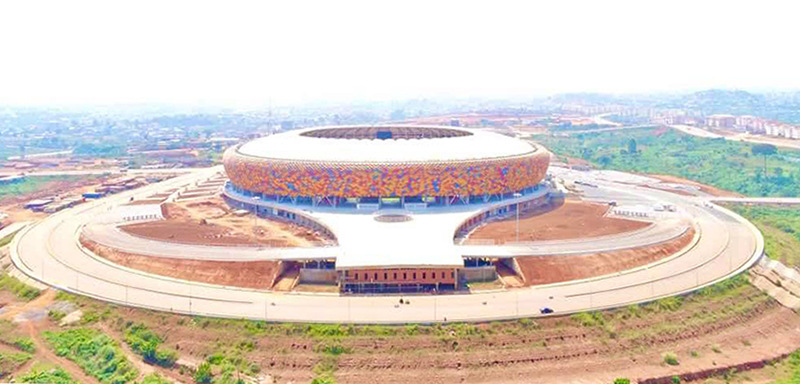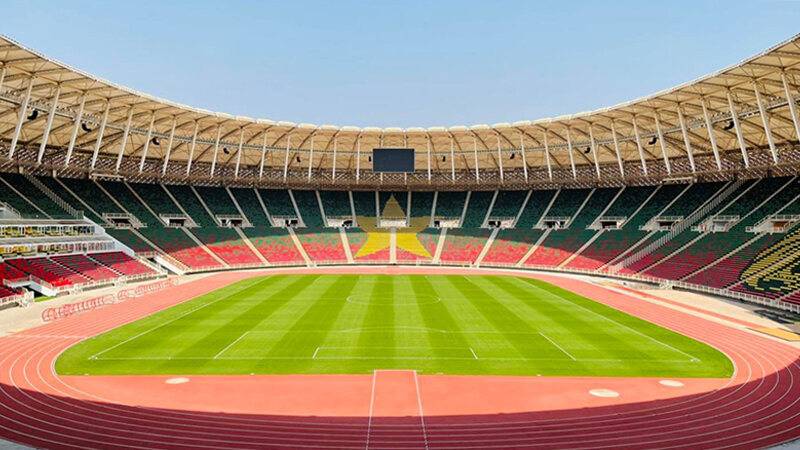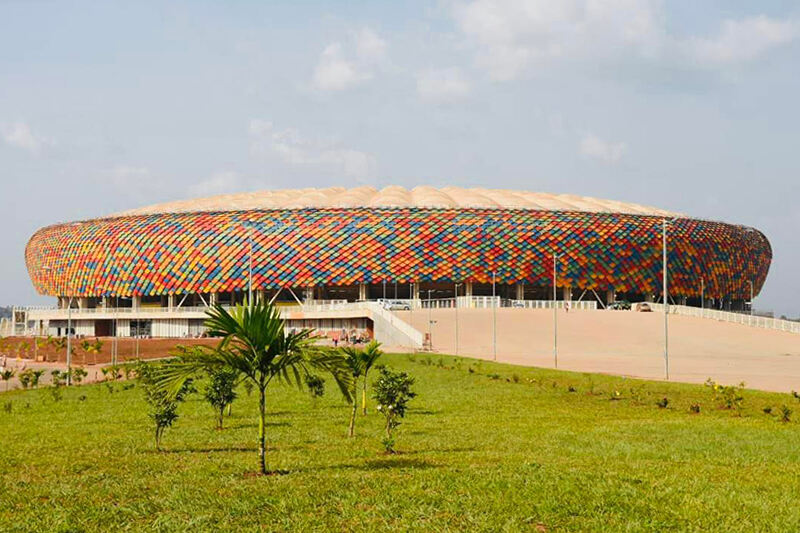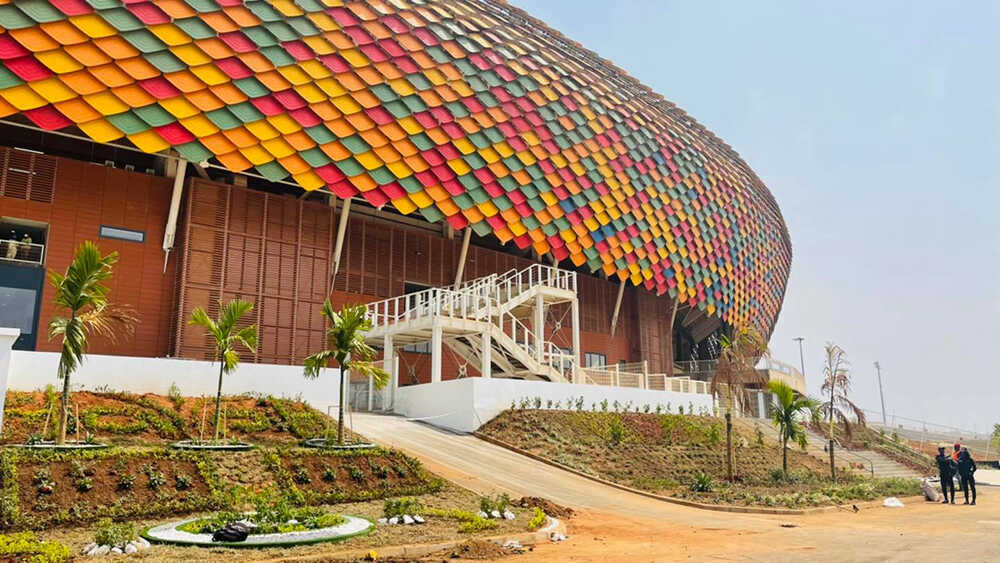New Stadium: Meet most important venue of Africa Cup of Nations
source: StadiumDB.com [TS]; author: Tomasz Sobura
 One of the liveliest football tournaments begins on Sunday. The matches will be played at six stadiums in Cameroon. 24 teams will take part in the competition and Algeria are the defending champions.
One of the liveliest football tournaments begins on Sunday. The matches will be played at six stadiums in Cameroon. 24 teams will take part in the competition and Algeria are the defending champions.
Advertisement
Three years of delay
Stade Omnisport Paul Biya with a capacity of 60,000 seats is the main arena of the 33rd edition of the Africa Cup of Nations that will be played in full in Cameroon from January 9 to February 6, 2022.
The stadium will host the opening game (Cameroon vs Burkina Faso), four other group stage fixtures, followed by one match each in the last sixteen, quarter-finals and semi-finals. The tournament will conclude with a grand final scheduled for February 6.
In mid-August, the venue was approved for use by the Confederation of African Football, although the infrastructure around it was leaving much to be desired. Inauguration of the ground took place on September 3, when the 2022 World Cup qualifier was played between "the Indomitable Lions" and Malawi (2-0).
To this day, the stadium is not fully completed and, what is worse, it is not known when it will be. Most importantly, there is still a lot of work to be done in the area around the facility. According to local media, many workers from the construction site have not received their wages for a long time.
This is probably the most important factor behind the delays. Even so, it seems that the completion rate of the arena is high enough to play all the matches of the AFCON 2022 without major disruptions.

© Professeur Narcisse MOUELLE KOMBI
Initially, the Cameroon government entrusted implementation of the investment to Gruppo Piccini, which on December 30, 2015 signed a contract for the construction of a sports complex. Works started 15 months after that date, more precisely on March 7, 2017, although the preparatory work lasted from 2016. The delay was caused by changes in the design and the necessity to pay compensations to local residents.
The stadium was to be completed in March 2019 at the latest, i.e. 3 months before the start of the AFCON 2019. However, the tournament was taken from Cameroon in November 2018 due to numerous slips in the implementation of projects and the terrorist threat.
It was decided that Cameroon would organise the competition in 2021, but later due to the pandemic, the games were postponed to 2022. Thanks to this, the contractor gained a lot of time to finalise the project.
The works themselves did not go smoothly, as there were numerous strikes and problems with financing the investment. The lack of satisfactory progress prompted the Cameroon officials to terminate the contract with the Italian company, what took place on November 29, 2019.
The Canadians from Magil Construction entered the site shortly after. Due to the change of contractor, XOF 55 billion (€ 84 million) had to be added to the project. The total delay of the venue was 3 years when it was put into use. At the beginning of December, the total cost of works up to that point was € 240 million, although the final amount will not be known until the completion of construction is announced.

© Professeur Narcisse MOUELLE KOMBI
Completion of stadium is ending first phase
Cameroon's largest arena is part of the Olembe sports complex, located in the northern part of Yaoundé (13 km from the city centre). The facility is named after the president of the country, Paul Biya.
An oval stadium with an athletics track was built in the suburbs of the capital. The arena's roofing is a tensile structure, a solution based on pre-tensioned cables composing an external compression ring connected through radial cables to an internal tension ring, supporting a membrane. The roof measures 300 m x 245 m and its highest point is 46 m above the ground.
The rest of the venue structure consists of prefabricated concrete and steel elements. Auditorium is made up of single-tier stands, where the seats mostly form a mosaic in green and red, which is a clear reference to the Cameroon flag.

© Professeur Narcisse MOUELLE KOMBI
Some of the seats behind the goal are arranged in a yellow star pattern and opposite the main stand are the seats that form the lion's head. The facade of the ground is covered with yellow, orange, red and blue scales-shaped metal panels.
The construction of the 34-hectare complex was divided into two phases. In the first of them, many other facilities were to be built along with the stadium that are still far from being completed. These are: a shopping mall, a 4-star hotel with 70 rooms, 3 cinemas and two training pitches (both with 1000 seats).
In the second stage, the plans include a sports museum and a 1000-spectator hall with basketball, volleyball and handball courts. The sports infrastructure will be complemented by an Olympic swimming pool with stands for 2,000 fans, 6 tennis courts and a number of smaller open-air facilities.
Author: Tomasz Sobura

© Professeur Narcisse MOUELLE KOMBI
Advertisement
 StadiumDB
StadiumDB